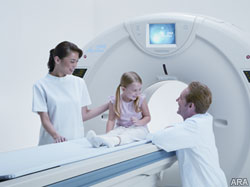
(ARA) – Doctors use medical imaging, including CT exams, MR imaging, X-ray or ultrasound, to quickly and accurately diagnose a range of health conditions. With recent media coverage focusing on imaging, many patients want to have a better understanding of how it works, when it should be used, the potential concerns and benefits, and what questions to ask when an exam is recommended.
A new resource for patients, www.myimagingexam.com, created by Toshiba America Medical Systems, provides tools to help you and your family better understand medical imaging.
Ask questions before an exam
When your doctor first recommends a medical imaging exam, asking questions about the test can increase your understanding of the benefits and considerations of the exam. Like all medical procedures, imaging should be used carefully, accurately and appropriately, so it is important to understand the exam your doctor recommends to ensure you or your family are receiving the best possible care.
When your doctor recommends an imaging test, some questions to ask are:
1. What will this exam tell us about my condition? Should we discuss other exams that could give us the same or more information?
2. Are there any side effects associated with this exam? For example, will I be exposed to radiation?
3. Is there any special preparation required for this exam? For example, do I need to fast before the exam?
4. How will this exam be recorded, and for how long will it be on file?
5. Can I see my images? How will I be notified of next steps?
Patients with special considerations
If you or your family have special considerations when it comes to imaging, such as children, obese patients and those with kidney complications, it is also important to understand these special imaging needs and how they will be addressed during the exam.
For example, exams for children should be tailored for their age, weight, height and condition to avoid any unnecessary exposure to radiation. Accumulative radiation dose over a lifetime can produce negative effects, making imaging equipment designed to reduce radiation dose essential. For example, the Aquilion ONE dynamic volume CT system is designed to reduce radiation dose by covering a larger area of anatomy in a single rotation.
Additionally, patients with kidney complications may have difficulty having some MRA exams, as a contrast agent is used to enhance the images and these patients may have complications. Toshiba is the only medical imaging vendor to offer non-contrast MRA techniques to provide safe, effective imaging to all patients.
Medical imaging technology continues to evolve to provide patients of all kinds with safe exams. To see how Toshiba is improving exams for patients, particularly those with special considerations, visit www.myimagingexam.com and click on the “patient-friendly imaging” tab at the top of the page.
Keeping a record of exams
Finally, after completing procedures, it is important for you to track the medical imaging exams you receive so your doctor can have a complete reference when recommending an exam in the future. Some exams, like CT and X-ray, emit radiation, so it is important to keep a record of those exams so radiation dose can be monitored.
To help you keep track of your exams, a downloadable patient imaging history card is available at www.myimagingexam.com/take-charge-of-your-imaging/patient-imaging-history-card/.
Medical imaging can provide important information
Medical imaging can provide vital information for you and your family’s health. With the right tools and knowledge, all patients can understand the benefits and considerations of medical imaging and can play an active role in their health management.





